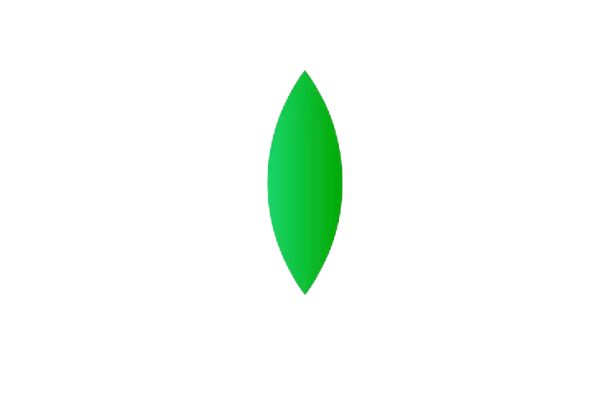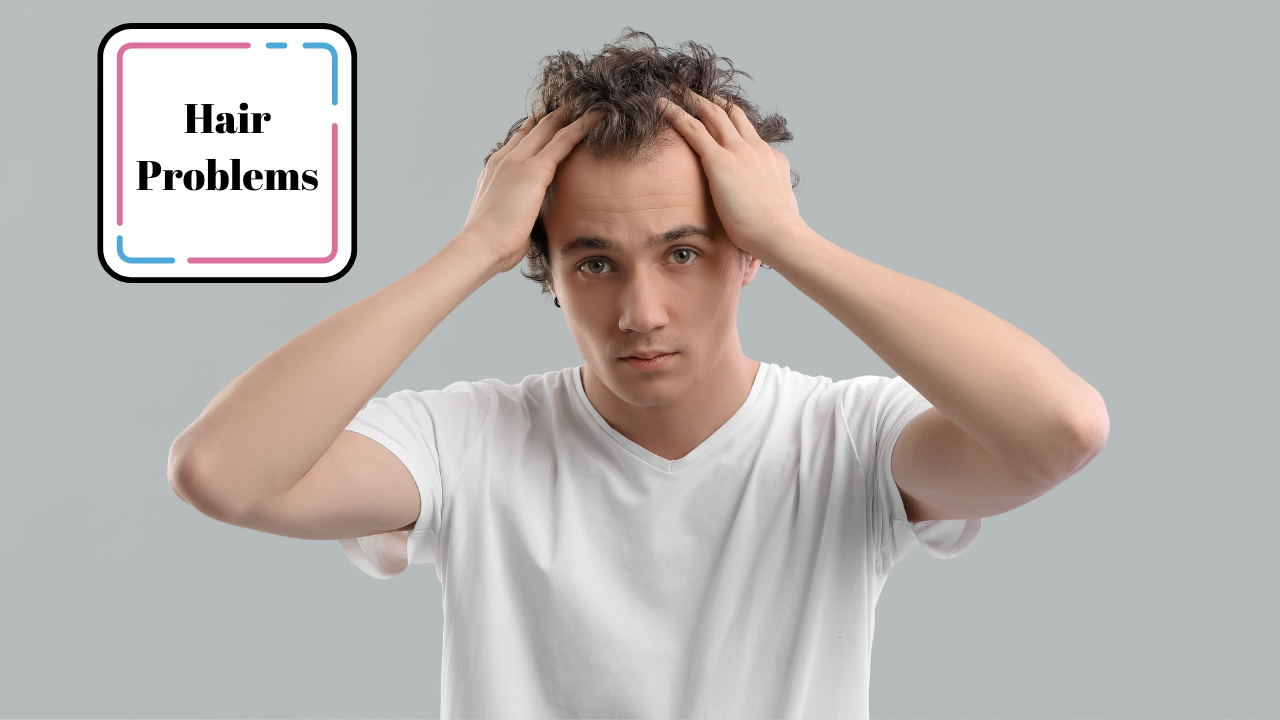Hair Problems
Hair Problems
Understanding Hair Problems: Structure, Function, and Solutions
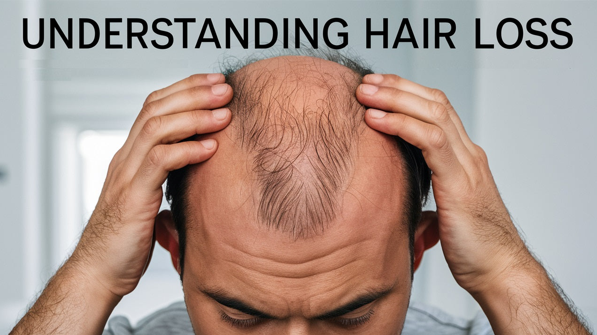
Welcome to the Saffron Educational and Medical Foundation, where we empower you to take charge of your health. Today, we delve into a topic that affects many: hair problems. This article will explore the structure and function of hair, common issues, and contributing factors.
Introduction to Hair Problems
Hair problems have been a topic of interest since the 19th century. The first documented case of hair loss was identified in a London barber shop in the 1860s by Professor Wheeler. By 1902, this interest evolved into the study of hair disorders, leading to the establishment of institutes dedicated to trichology.
The Complexity of Hair
Hair serves multiple functions beyond aesthetics. It transmits sensory information, contributes to gender identity, and plays a crucial role in appearance. Hair is unique as it grows on all visible body surfaces and is the only structure that regenerates without scarring.
Anatomy of the Hair Follicle
The follicle is a tubular structure containing:
- Inner and Outer Sheaths: Protect and mold the hair shaft.
- Papilla: A projection at the base containing capillaries that nourish hair cells.
- Bulb: The living part of the hair where rapid cell division occurs.
The Historical Perspective on Hair Problems
Hair problems have been a concern for centuries, evolving alongside societal and cultural norms. In ancient civilizations like Egypt, hair was associated with beauty, power, and status. Historical remedies included natural oils and herbs, many of which remain relevant today. Over time, advances in science and technology led to modern trichology, a dedicated field addressing hair health. This historical journey highlights the enduring importance of hair care in human societies.
The Complexity of Hair: Beyond Aesthetics
Hair is more than an accessory; it reflects health, culture, and individuality. The texture, colour, and style of hair often signify cultural identity or personal expression. Beyond its visual appeal, hair plays protective roles: eyelashes and eyebrows guard the eyes, while scalp hair insulates the head. Hair’s sensitivity to touch adds another dimension to its complexity, signalling its integral role in sensory perception.
Structure of Hair
Hair is a complex structure that plays a vital role in protecting the body, regulating temperature, and enhancing physical appearance. It consists of several components that work together to produce hair growth, texture, and strength. Understanding the anatomy of hair can help in recognizing how it grows and how different factors affect its health.
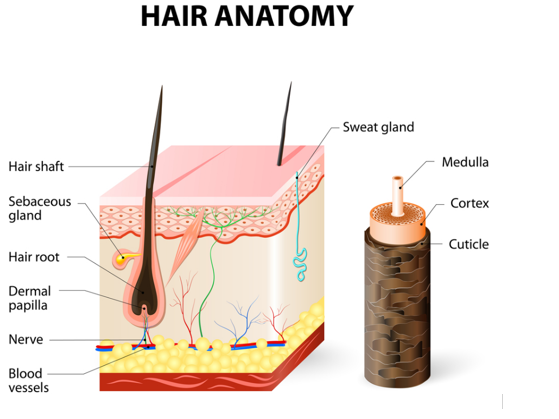
1. Hair Shaft (Visible Part):
The hair shaft is the part of the hair that is visible above the surface of the skin. It is made up of keratin, a fibrous protein that also forms the skin and nails. The hair shaft itself has three distinct layers:
- Medulla: The innermost layer, which is soft and sponge-like. It is present in thicker, coarser hair but may not be noticeable in finer hair.
- Cortex: The middle layer, containing the bulk of the hair’s strength and color. It is made of tightly packed keratin fibers and contains melanin, the pigment responsible for hair color. The cortex also gives hair its elasticity and strength.
- Cuticle: The outermost layer, consisting of overlapping scales or cells. These scales protect the inner layers from damage and help keep the hair shiny and smooth. When the cuticle is damaged or raised (due to factors like heat styling or chemical treatments), hair can become rough, dull, and prone to breakage.
2. Hair Follicle (Root):
The hair follicle is the structure beneath the skin that produces and grows hair. It is located in the dermis, the deeper layer of skin. The follicle is the “root” of the hair, and it houses the living part of the hair.
The components of the hair follicle include:
- Hair Bulb: At the base of the follicle, the bulb is the part where hair cells divide and grow. It contains papilla, which is a small bump of tissue that provides nourishment to the hair follicles through a supply of blood vessels.
- Hair Matrix: The matrix is located just above the papilla, where new cells are formed. These cells quickly multiply and move upward, keratinizing (hardening) as they rise to form the hair shaft.
- Arrector Pili Muscle: This small muscle is attached to the hair follicle. When contracted (such as when you feel cold or frightened), it causes the hair to stand up, forming what we commonly refer to as “Goosebumps”.
3. Sebaceous Gland:
Located near the hair follicle, the sebaceous gland produces sebum, an oily substance that helps to lubricate the hair and skin, keeping them moisturized and protected. The sebum also has antimicrobial properties and helps maintain the hair’s natural shine and flexibility.
4. Hair Root:
The hair root is the portion of hair embedded inside the follicle beneath the skin’s surface. It is responsible for the growth and development of the hair shaft. The hair root is connected to the dermal papilla, which supplies it with nutrients and growth signals.
Functions of Hair:
Hair’s roles go beyond appearance, contributing to both physical and emotional well-being.
- Protection: Scalp hair shields against UV radiation and temperature extremes.
- Sensory Mechanism: Hair follicles are embedded with nerve endings, enabling tactile sensitivity.
- Psychological Impact: Healthy hair boosts self-esteem and reflects vitality.
- Thermal Regulation: Hair helps regulate body temperature, retaining warmth during cold conditions.
Common Hair Problems:
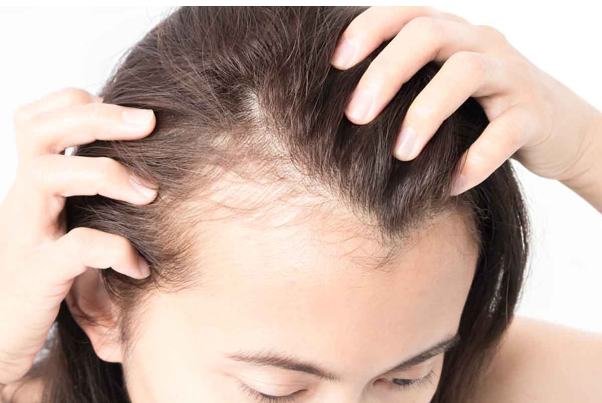
Hair Thinning and Baldness:
While hair thinning can occur naturally with age, conditions like alopecia or traction alopecia can accelerate it. Modern solutions include topical treatments like minoxidil, platelet-rich plasma therapy, and hair transplants.
Scalp Infections:
Fungal infections such as ringworm or bacterial conditions like folliculitis disrupt hair growth. Prompt treatment with medicated shampoos or antifungal agents is essential to prevent damage.
Frizz and Breakage:
Frizz occurs due to a lack of moisture, while breakage stems from weak hair strands. Both issues can be mitigated by hydrating hair masks, protein treatments, and minimizing heat styling.
Factors Affecting Hair Health:
Environmental Factors:
Pollution, sun exposure, and hard water can degrade hair quality. Protecting hair with scarves, hats, or UV-protective products is crucial for long-term health.
Internal Imbalances:
Hair reflects internal health. Nutritional deficiencies, dehydration, and systemic illnesses like diabetes can manifest as hair problems. Regular health check-ups can pre-emptively address these issues.
Psychological Stress:
Stress triggers hormonal shifts, leading to hair shedding or greying. Practices like yoga, therapy, and physical exercise are effective stress mitigations, indirectly improving hair health.
Solutions for Maintaining Healthy Hair:
Natural Remedies:
Incorporate time-tested natural solutions:
- Aloe Vera: Soothes the scalp and promotes growth.
- Coconut Oil: Deeply conditions and strengthens hair strands.
- Fenugreek Seeds: Prevents dandruff and stimulates follicles.
Lifestyle Changes:
- Prioritize hydration and a balanced diet rich in Omega-3 fatty acids.
- Avoid excessive chemical treatments and harsh hair products.
- Embrace mindfulness practices to reduce stress-related hair problems.
Advanced Treatments
Modern hair care technologies include:
- Low-Level Laser Therapy (LLLT): Stimulates follicular activity.
- Hair Mesotherapy: Injects nutrients directly into the scalp.
- Derma rolling: Enhances product absorption and stimulates growth.
Recognizing Normal and Abnormal Hair Loss:
During consultations, individuals are often asked about their daily hair shedding. Normal shedding ranges from 20-50 hairs per day and may be attributed to factors such as mild nutritional deficiencies or hygiene issues. However, shedding that exceeds 100-150 hairs daily warrants further investigation and possibly medical treatment.
Addressing Hair Loss Conditions:
Understanding the hair growth cycle is essential for diagnosing and managing hair loss conditions. Telogen Effluvium, for example, can be addressed by:
- Correcting nutritional deficiencies.
- Ensuring proper hair and scalp care.
- Managing stress levels and monitoring recovery from illnesses.
In conclusion, while hair loss can be distressing, recognizing its causes and phases can aid in effective management. With appropriate care and, if necessary, medical intervention, most hair loss conditions, including Telogen Effluvium, can be resolved.
Understanding Hair Growth Cycles & Pigmentation:
Hair growth is a dynamic and complex process involving different phases that dictate the cycle of hair growth, rest, and shedding. Additionally, hair pigmentation and its changes play a crucial role in hair characteristics. Below, we delve into the hair growth cycle, pigmentation, and various hair-related diseases.
Hair Growth Cycles:
Hair on the scalp grows approximately 3-4 millimeters per day or about six inches annually. Unlike other mammals, human hair growth is not seasonal but random, with each hair follicle operating independently. At any given moment, individual hairs may be in different stages of the growth cycle, which consists of three primary phases:
- Anagen Phase (Growth Phase):
- The anagen phase is the active growing phase of hair, during which the cells in the root divide rapidly.
- A new hair forms, pushing the old club hair—a hard, dry, white material—up and out of the follicle.
- This phase typically lasts 2-7 years and determines the length of the hair.
- Catagen Phase (Transitional Phase):
- This short phase acts as a bridge between the anagen and telogen phases, lasting about 2-3 weeks.
- During this period, hair growth ceases, and the outer root sheath shrinks and attaches to the root of the hair, forming what is known as a club hair.
- Telogen Phase (Resting Phase):
- The telogen phase is a resting period that accounts for 10-15% of all hair at any time.
- Lasting about 100 days for scalp hair and longer for other types of body hair, this phase is marked by complete dormancy of the hair follicle.
- Normally, 25-100 telogen hairs are shed daily as part of the natural cycle. However, in cases like Telogen Effluvium, shedding can escalate significantly.
Hair in other parts of the body, such as arms, legs, and eyebrows, has shorter anagen phases, resulting in shorter hair lengths. The active growth phase for these areas ranges from 30 to 45 days, compared to the years-long phase of scalp hair.
Hair Pigmentation:
Hair pigmentation is determined by the presence of melanin, which imparts color to the hair shaft. There are two main types of melanin found in hair:
- Eumelanin:
- Responsible for shades ranging from brown to black.
- Pheomelanin:
- Responsible for yellowish blonde, ginger, and red hues.
The absence of pigment results in white or grey hair. Melanin production is influenced by genetic and environmental factors. During hair colouring, the cuticle or outer layer of the hair must be opened for the pigment to be deposited or removed. The cortex, where natural pigments reside, reacts with colouring agents to achieve the desired shade.
Changes in pigmentation can lead to conditions such as Tinnius, where pigment diminishes, producing a range of colours from normal to white (grey). This gradual loss can start from a young age due to nutritional deficiencies, stress, lack of sleep, or strict diets low in high-quality proteins. Other pigmentation-related conditions include Ringed Hair, a rare disorder where pigmented and non-pigmented bands alternate along the hair shaft.
Diseases of the Hair and Scalp:
Several conditions affect human hair and scalp, ranging from structural issues to excessive shedding and pigmentation disorders. Below are some common hair diseases:
- Tinnius:
- The diminishing of pigment in hair results in a gradual shift from normal color to gray or white.
- Often linked to nutritional deficiencies, stress, inadequate sleep, or protein-poor diets.
- Ringed Hair:
- Characterized by alternating pigmented and non-pigmented bands along the hair shaft.
- Commonly seen in individuals with poor scalp hygiene or specific genetic conditions.
- Hypertrichosis:
- A condition of excessive body hair, affecting both males and females.
- In females, it may manifest as excessive facial hair, while in males, it can involve heavy chest hair.
- Trichorrhexis Nodosa:
- A structural defect in the hair shaft leading to thickened, weak points or nodes.
- Causes the hair to break easily, often due to chemical treatments or nutritional deficiencies.
- Monilethrix:
- A rare inherited disorder characterized by sparse, brittle hair that breaks before reaching significant length.
- Associated with dry and fragile hair.
- Dandruff:
- A common condition involving excessive shedding of dead skin cells from the scalp.
- Can range from mild flaking to more severe forms with associated inflammation and itching.
Dandruff and Environmental Factors:
Excessive oil secretion on the scalp combined with exposure to air pollution can exacerbate dandruff. While minor flaking is normal due to the natural death and shedding of skin cells, excessive flakes and associated conditions, such as wounds or bald spots, may require attention. Proper washing and scalp hygiene can mitigate many issues, but severe cases may signal underlying conditions.
Alopecia and Hair Loss Conditions:
Alopecia refers to hair loss that can occur in localized patches or throughout the scalp. Common forms include:
- Male and Female Pattern Baldness: Genetic factors lead to gradual thinning and eventual baldness.
- Telogen Effluvium: Characterized by excessive shedding of hair due to stress or physiological changes. It can be acute (lasting less than six months) or chronic (lasting longer than six months).
Telogen Effluvium causes hair to prematurely enter the resting phase. This condition can be triggered by:
- High fever or severe infections (e.g., typhoid, malaria, or COVID-19).
- Postpartum changes and nutritional deficiencies.
- Psychological stress and metabolic disorders.
Acute telogen effluvium usually resolves within a few months, with hair regrowth occurring naturally. Chronic cases, however, can result in prolonged shedding and require medical intervention.
Addressing Hair Conditions:
Understanding the underlying causes of hair and scalp conditions is essential for effective management. Measures include:
- Ensuring proper nutrition, particularly adequate protein intake.
- Maintaining scalp hygiene and avoiding overuse of chemical treatments.
- Seeking medical advice for persistent or severe conditions like alopecia or trichorrhexis nodosa.
In conclusion, hair growth, pigmentation, and health are influenced by a range of factors, including genetics, nutrition, and environmental exposure. With the right care and intervention, most hair-related conditions can be effectively managed or resolved.
Comprehensive Guide to Hair Loss Causes and Remedies:
Hair loss is a common concern affecting individuals worldwide, often resulting from various medical, lifestyle, and environmental factors. Understanding the root causes and implementing effective remedies can significantly mitigate this issue. This guide explores the multifaceted reasons behind hair loss and outlines actionable steps to address them.
Common Causes of Hair Loss:
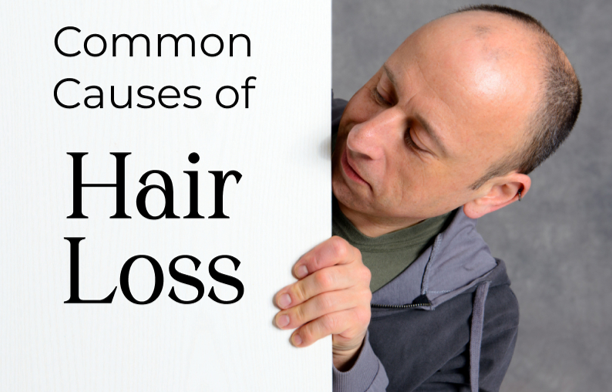
- Medications and Treatments:
- Depression Medications: Some antidepressants can lead to hair loss as a side effect.
- Major Surgeries: Post-surgery stress and inadequate care often result in hair loss.
- Contraceptives: Discontinuation of oral contraceptives causes hormonal imbalances, leading to hair fall.
- Other Medications: Drugs like beta-blockers, calcium channel blockers, nonsteroidal anti-inflammatory drugs (NSAIDs), and others can contribute to hair loss.
- Hormonal Disorders:
- Hyperthyroidism: Overactive thyroid glands increase metabolic rates, leading to significant protein and vitamin depletion. This often manifests as thin, brittle hair and extensive hair loss.
- Hypothyroidism: Insufficient thyroid activity also results in hair thinning, albeit less pronounced than hyperthyroidism.
- Dietary Deficiencies:
- Protein Deficiency: Diets lacking high biological value protein lead to weak hair and eventual hair fall.
- Vitamins and Minerals: Deficiencies in vitamins A, B, C, D, and iron exacerbate hair loss.
- Restrictive Diets: Rapid weight-loss programs or diets devoid of essential nutrients trigger telogen effluvium (a temporary hair shedding condition).
- Stress and Sleep:
- Chronic stress is a significant contributor to telogen effluvium.
- Sleep deprivation disrupts the body’s repair mechanisms, indirectly leading to hair loss.
- Environmental and Lifestyle Factors:
- Pollution: Prolonged exposure to pollutants damages hair follicles.
- Chemical Treatments: Frequent use of hair straightening, smoothening, blow drying, and harsh chemical products weaken hair structure.
- Autoimmune and Genetic Conditions:
- Alopecia Areata: An autoimmune disease causing patchy hair loss on the scalp and other parts of the body.
- Androgenetic Alopecia: A hereditary condition characterized by gradual hair thinning.
Effective Remedies for Hair Loss:
- Dietary Adjustments:
- Increase Protein Intake: Aim for 1 to 1.5 grams of protein per kilogram of body weight, especially in cases of telogen effluvium.
- Mediterranean Diet: Emphasize fresh fruits, vegetables, whole grains, lean proteins, and healthy fats.
- Supplementation: Incorporate vitamin A, B-complex, C, D, and iron supplements under medical supervision.
- Stress Management:
- Practice meditation and yoga to reduce stress levels.
- Ensure adequate sleep (7-9 hours per night) to restore bodily functions.
- Proper Hair Care Practices:
- Use mild, sulfate-free shampoos and conditioners.
- Minimize the use of heat styling tools.
- Avoid over-processing hair with dyes and chemical treatments.
- Medical Interventions:
- Consult a healthcare provider for persistent hair loss.
- Use prescribed treatments like minoxidil or finasteride for androgenetic alopecia.
- Address underlying medical conditions such as thyroid imbalances with appropriate medications.
- Regular Exercise:
- Engage in physical activities to improve blood circulation, including to the scalp, which can promote healthier hair growth.
- Engage in physical activities to improve blood circulation, including to the scalp, which can promote healthier hair growth.
- Professional Guidance:
- Seek advice from dermatologists or trichologists for tailored treatment plans.
- Explore advanced therapies like platelet-rich plasma (PRP) or low-level laser therapy (LLLT) if conventional treatments are ineffective.
Case Study: Managing Telogen Effluvium
Telogen effluvium is a temporary condition often triggered by stress, illness, or dietary deficiencies. Patients are advised to:
- Increase protein intake to 1.2–1.5 grams per kilogram of body weight.
- Incorporate vitamin supplements, particularly biotin and zinc.
- Practice relaxation techniques to manage stress levels.
- Maintain a balanced diet rich in whole foods.
Hair loss is a complex issue influenced by diverse factors such as medication side effects, hormonal imbalances, dietary deficiencies, and stress. A proactive approach encompassing proper nutrition, stress management, appropriate hair care, and medical consultation can help combat hair loss effectively. Adopting a holistic lifestyle not only enhances hair health but also contributes to overall well-being.
Understanding Alopecia: Types, Causes, and Patterns of Hair Loss
Alopecia, commonly referred to as hair loss, affects millions of individuals worldwide. It can manifest in various forms, ranging from minor thinning to complete baldness. Hair loss can impact a person’s self-esteem and overall confidence, making it essential to understand the different types, causes, and prevention strategies. This article provides an in-depth explanation of alopecia, its patterns, and its underlying causes, offering valuable insights into managing and preventing hair loss.
The Basics of Hair Growth
Before diving into alopecia, it is crucial to understand how hair grows. Hair growth occurs in cycles, and each follicle goes through three main phases:
- Anagen Phase (Growth Phase): This is the active phase of hair growth, lasting anywhere from two to seven years. During this time, hair grows continuously.
- Catagen Phase (Transition Phase): This short phase lasts about 10 days, during which the hair follicle shrinks and detaches from the blood supply.
- Telogen Phase (Resting Phase): In this phase, the hair follicle remains dormant for about three months before shedding and making way for new hair growth.
The balance between these phases is critical for maintaining healthy hair. When this balance is disrupted, hair loss can occur.
Hair Loss Patterns in Men and Women
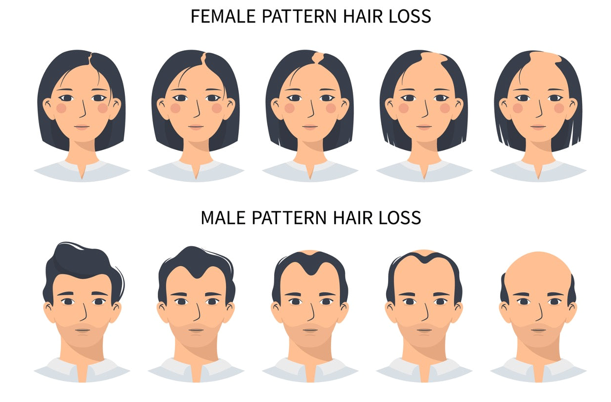
Hair loss manifests differently in men and women due to hormonal and genetic factors.
Male Pattern Hair Loss (Androgenetic Alopecia):
Male pattern hair loss typically begins with a receding hairline and thinning at the crown. Over time, these areas can merge, leading to partial or complete baldness. The primary cause of male pattern hair loss is the hormone dihydrotestosterone (DHT), a byproduct of testosterone. DHT binds to hair follicles, causing them to shrink and produce thinner, weaker hair.
Female Pattern Hair Loss:
Female pattern hair loss is more diffuse, with thinning occurring across the entire scalp rather than in specific areas. Women are less likely to experience complete baldness, but they may notice a significant reduction in hair volume. Hormonal changes, such as those occurring during menopause, can contribute to female pattern hair loss. High-tension hairstyles, such as ponytails and buns, can also cause mechanical damage to hair follicles, leading to a condition known as traction alopecia.
Types of Alopecia:
There are several types of alopecia, each with distinct characteristics and causes. Understanding these types is essential for diagnosing and treating hair loss effectively.
1. Alopecia Areata:
Alopecia areata is an autoimmune condition in which the immune system attacks hair follicles, causing hair to fall out in small, round patches. This condition can affect the scalp, face, and other parts of the body. The exact cause of alopecia areata is unknown, but it is believed to be triggered by genetic and environmental factors.
2. Alopecia Totalis:
Alopecia totalis is a more severe form of alopecia areata, characterized by the complete loss of hair on the scalp. It is also an autoimmune condition and can progress rapidly, causing significant emotional distress.
3. Alopecia Universalis:
Alopecia universalis is the most advanced form of alopecia areata, resulting in the complete loss of hair on the scalp and body, including eyebrows and eyelashes. This condition can significantly impact a person’s appearance and quality of life.
4. Diffuse Alopecia:
Diffuse alopecia refers to a general thinning of hair across the entire scalp rather than patchy hair loss. It can be caused by various factors, including stress, hormonal imbalances, nutritional deficiencies, and certain medications.
5. Traction Alopecia:
Traction alopecia is caused by prolonged tension on the hair follicles, often due to tight hairstyles. Over time, this tension can damage the follicles, leading to hair loss. This type of alopecia is preventable by adopting less stressful hair care practices.
6. Ophiasis:
Ophiasis is a subtype of alopecia areata that affects the hair along the sides and back of the scalp in a band-like pattern. This type of hair loss can be challenging to treat and may require specialized interventions.
Causes of Alopecia:
Alopecia can be caused by a combination of genetic, hormonal, environmental, and lifestyle factors. Understanding these causes is essential for developing effective treatment strategies.
Genetic Predisposition:
Genetics play a significant role in hair loss. If hair loss runs in the family, individuals are more likely to experience it themselves. Androgenetic alopecia, commonly known as male or female pattern baldness, is the most common hereditary form of hair loss.
Hormonal Factors:
Hormonal changes can trigger hair loss in both men and women. The hormone dihydrotestosterone (DHT) plays a crucial role in pattern hair loss. DHT binds to androgen receptors in hair follicles, causing them to shrink and produce thinner, weaker hair.
In women, hormonal changes during pregnancy, menopause, and other life stages can contribute to hair loss. Conditions such as polycystic ovary syndrome (PCOS) and thyroid disorders can also impact hair health.
Lifestyle and Environmental Factors:
Several lifestyle and environmental factors can contribute to hair loss, including:
- Poor Nutrition: A diet lacking essential nutrients, such as iron, zinc, and vitamins, can weaken hair follicles.
- Stress: Chronic stress can disrupt the hair growth cycle, leading to increased shedding.
- Hairstyling Practices: Frequent use of heat styling tools, chemical treatments, and tight hairstyles can damage hair and lead to traction alopecia.
- Medications: Certain medications, including chemotherapy drugs, antidepressants, and blood thinners, can cause hair loss as a side effect.
The Role of DHT in Hair Loss:
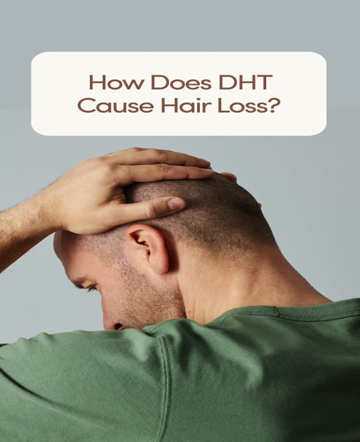
Dihydrotestosterone (DHT) is a natural hormone produced as a byproduct of testosterone. While DHT plays a role in developing male secondary sexual characteristics, it can also contribute to hair loss.
How DHT Affects Hair Follicles:
DHT binds to androgen receptors in hair follicles, causing them to shrink over time. This process, known as follicular miniaturization, results in shorter hair growth cycles and thinner, weaker hair. In advanced stages, the hair follicle may stop producing hair altogether.
Managing DHT Levels:
Managing DHT levels is a common approach to treating androgenetic alopecia. Medications such as finasteride work by inhibiting the enzyme 5-alpha-reductase, which converts testosterone into DHT. Other treatments, such as topical minoxidil, can stimulate hair growth and improve hair density.
Prevention and Early Intervention:
Early intervention is crucial for managing alopecia effectively. Neglecting early signs of hair loss can result in irreversible damage to hair follicles. Here are some preventive measures to reduce the risk of severe hair loss:
1. Adopt a Healthy Diet:
A balanced diet rich in essential nutrients, such as iron, zinc, and vitamins A, C, D, and E, can promote healthy hair growth. Omega-3 fatty acids and biotin are also beneficial for hair health.
2. Reduce Stress:
Stress management techniques, such as meditation, yoga, and regular exercise, can help reduce the risk of hair loss triggered by stress.
3. Practice Gentle Hair Care:
Avoid tight hairstyles, excessive heat styling, and harsh chemical treatments. Use gentle shampoos and conditioners, and avoid over-washing your hair.
4. Seek Medical Advice:
Consult a dermatologist or trichologist if you notice signs of hair loss. Early diagnosis and treatment can prevent the condition from worsening.
Alopecia is a complex condition with various causes and manifestations. Understanding the different types of alopecia and their underlying causes is essential for effective management and prevention. While genetic predisposition plays a significant role, lifestyle factors, hormonal changes, and environmental influences also contribute to hair loss. Early intervention, a healthy lifestyle, and appropriate medical treatments can help individuals manage alopecia and maintain healthy hair.
Understanding Hair Conditions: Split Ends, Pityriasis, and Premature Graying:
Hair conditions can range from aesthetic concerns to issues caused by environmental, chemical, or nutritional factors. This article delves into some common hair problems, their causes, symptoms, and possible treatments.
Split Ends and Hair Damage:
Split ends, or trichoptilosis, are a common hair condition where the protective cuticle of the hair strand is destroyed, causing the hair to split. Split ends often appear grayish and feel rough.
Causes:
- Chemical Treatments: Excessive use of hair coloring, smoothening, and similar treatments can weaken hair strands.
- Mechanical Damage: Vigorous brushing, especially when hair is wet, and improper use of hair extensions contribute to hair breakage.
- Heat Styling: Excessive use of straighteners, curling irons, blow dryers, and other heated tools damages the hair shaft.
- Tight Hairstyles: High buns, tight braids, and similar hairstyles pull on the roots, causing damage over time.
- Sun Exposure: Prolonged exposure to sunlight and UV radiation weakens hair strands.
Symptoms:
- Hair splitting into two or more strands, sometimes up to 2-3 cm in length.
- Rough texture and uneven appearance of hair.
Treatment:
- Regular trimming to remove split ends.
- Use of hydrating masks and conditioners to nourish hair.
- Avoiding excessive heat and chemical treatments.
- Implementing scalp hygiene by washing hair regularly.
Pityriasis (Gray Hair Conditions):
Pityriasis refers to a condition where hair appears gray or lacks color, often caused by environmental or chemical damage.
Causes:
- Sunlight and UV Radiation: Prolonged exposure to the sun can bleach hair, causing it to appear gray.
- Chemical Damage: Repeated use of hair coloring and treatments leads to significant damage.
- Improper Care: Vigorous brushing or combing wet hair exacerbates hair breakage.
- Tight Hairstyles: Pulling and braiding hair tightly can weaken strands.
Symptoms:
- Loss of natural hair color.
- Hair becoming brittle and prone to breakage.
- Itchiness and signs of seborrheic dermatitis in severe cases.
Treatment:
- Hydration therapy and repair treatments for the hair shaft.
- Use of stimulating lotions and ointments to encourage hair health.
- Regular scalp cleaning and conditioning.
- Avoidance of tight hairstyles and heat treatments.
Premature Graying:
Premature graying, or canities, is a condition where hair loses its color earlier than expected. It is typically defined as gray hair appearing before 20 years in Europeans, 25 years in Asians, and 30 years in Africans. However, cases of premature graying are increasingly common in children and teenagers.
Causes:
- Nutritional Deficiencies: Lack of essential nutrients, particularly vitamins and minerals, can lead to graying.
- Melanin Reduction: Hair color is determined by melanin, and its decreased production results in gray hair.
Symptoms:
- Appearance of gray or white hair, often starting at the temples and spreading.
Treatment:
- Ensuring a balanced diet rich in nutrients to promote melanin production.
- Using hair care products specifically formulated for graying hair.
- Avoiding chemical treatments that exacerbate damage.
General Hair Care Tips:
To maintain healthy hair and prevent these conditions, follow these guidelines:
- Regular Washing: Clean your scalp and hair at least twice a week to prevent buildup of oil and dirt.
- Avoid Overprocessing: Limit the use of chemical treatments and heat-styling tools.
- Protective Hairstyles: Opt for loose hairstyles that do not pull on the hair roots.
- Sun Protection: Use hats or protective sprays when exposed to the sun for extended periods.
- Hydration: Apply conditioning treatments and masks to keep hair moisturized.
By understanding the causes and remedies of these common hair conditions, you can take proactive steps to maintain the health and appearance of your hair.
Understanding the Process:
Hair pigmentation and graying involve intricate biological processes regulated by melanocytes, which are specialized cells that produce melanin—the pigment responsible for hair color. The loss of melanin or malfunction in its production results in gray or white hair.
The Role of Melanocytes:
Melanocytes are located in the hair follicle, particularly in the bulb and outer root sheath. These cells synthesize melanin and transfer it to keratinocytes in the hair shaft. Two primary types of melanin determine hair color:
- Eumelanin: Provides black or brown color.
- Pheomelanin: Produces red or yellow hues.
The balance and concentration of these pigments determine the specific hair color. Factors such as genetics, nutrition, and age influence melanocyte activity and melanin production.
Congenital and Acquired Graying:
Congenital Graying:
Congenital graying, also known as congenital colitis, is a rare condition present at birth. It occurs when melanin production is absent or significantly reduced due to genetic factors.
Characteristics:
- Commonly seen in individuals with albinism who lack pigment in the skin, hair, and eyes.
- Some individuals may exhibit patchy graying, where specific regions of the scalp or body lack pigmentation.
Causes:
- Genetic mutations affecting melanin synthesis.
- Disorders like Waardenburg syndrome or piebaldism.
Management:
Congenital graying is not treatable, as it is rooted in genetic and developmental factors. Supportive care involves protecting the hair and scalp from environmental damage.
Acquired Graying:
Acquired graying, also known as premature graying or canities, develops with age or due to external factors.
Characteristics:
- Often begins at the temples or crown and gradually spreads.
- Hair may exhibit a ringed pattern, alternating between gray and pigmented segments.
Causes:
- Genetics: A significant factor in the timing and extent of graying.
- Stress and Anxiety: Prolonged psychological stress impacts melanin production.
- Nutritional Deficiencies: Inadequate levels of vitamins (B12, D) and minerals (iron, zinc) disrupt melanin synthesis.
- Chemical Damage: Frequent hair treatments and exposure to harsh chemicals can accelerate graying.
Management:
- Dietary Adjustments: Consuming foods rich in vitamins and antioxidants can support melanin production.
- Avoiding Stress: Techniques such as meditation and exercise may reduce stress-induced graying.
- Hair Care: Using mild, nourishing hair products to minimize chemical damage.
Hair Pigmentation and the Hair Cycle:
Hair pigmentation is closely linked to the hair growth cycle:
- Anagen (Growth Phase): Active melanin production occurs, giving hair its natural color.
- Catagen (Transition Phase): Melanin production decreases as the follicle shrinks.
- Telogen (Resting Phase): Pigmentation ceases, and hair may appear lighter.
Melanin production peaks during the anagen phase. As follicles age, melanocytes become less efficient, leading to graying.
Melanocyte Function and Aging:
With age, melanocytes:
- Diminish in number and activity.
- Produce less melanin, leading to lighter hair shades.
- Become susceptible to oxidative stress, further reducing pigmentation.Understanding the biological and environmental factors influencing hair pigmentation and graying can empower individuals to adopt effective hair care strategies. While congenital graying is a genetic trait, acquired graying can often be managed or delayed through lifestyle choices, proper nutrition, and protective measures.
Styling and Hair Care Tips:
Experimenting with Hair Colors:
Changing hair color using shades like red, blue, or green can add vibrancy to your look. When selecting hair dyes, ensure they are from reputable brands to minimize damage. Always consider the following:
- Use high-quality products to prevent damage.
- Follow up with nourishing shampoos and conditioners specifically designed for colored hair.
- Hydrate your hair and limit heat styling after coloring to maintain its health.
Natural Remedies for Hair Health:
- Fenugreek Seeds for Dandruff Control
Fenugreek is a time-tested remedy for dandruff.
- Soak 2 tablespoons of fenugreek seeds overnight.
- Grind the softened seeds into a fine paste in the morning.
- Apply the paste to the scalp and leave it for 30 minutes before rinsing.
Regular application reduces dandruff and curbs hair fall.
- Neem for Scalp Health
Neem leaves, known for their antimicrobial properties, are effective in treating dandruff and reducing hair fall.
- Boil neem leaves in water and use the infusion to wash your hair.
- Alternatively, neem oil can be applied to the scalp to eliminate lice and nourish the hair.
- Castor Oil for Hair Growth
Castor oil strengthens hair roots and prevents dandruff. Regular scalp massages with castor oil can promote healthier, thicker hair.
Solutions for Baldness and Hair Patches:
Herbal Pastes for Bald Patches
Early-stage baldness can benefit from natural remedies:
- Turrah Seed Paste: Combine turrah seeds with ingredients like licorice, saffron, and milk cream. Heat the mixture in coconut oil until it forms a charred residue. Use the resultant oil on bald patches to stimulate hair growth.
- Indian Hemp Juice: The juice of Indian hemp can address patchy baldness and dandruff.
Saffron and Root-Based Applications
- Grind small pieces of roots with milk and a pinch of saffron into a paste.
- Apply this at bedtime on bald patches. Regular use has shown hair growth in some cases.
Diet and Hygiene for Hair Health:
- Protein-Rich Diet: Incorporate 1–1.5 grams of protein per kilogram of body weight daily. Foods like eggs, lentils, fish, and nuts are excellent sources.
- Balance in Cooked and Raw Foods: Aim for a 70% raw and 30% cooked food ratio to maximize nutrient intake.
- Supplements: While whole foods are preferable, supplements like biotin or zinc may support hair health in cases of deficiency.
Hygiene Practices:
- Wash hair regularly with mild, sulfate-free shampoos.
- Moisturize your scalp with oils and avoid excessive chemical treatments.
Avoid Overprocessing:
Embrace natural hair texture and minimize chemical and heat styling. If coloring your hair, ensure proper aftercare to prevent further damage.
Maintaining healthy hair involves a mix of natural remedies, proper nutrition, and avoiding overprocessing. Whether tackling dandruff, addressing hair loss, or simply ensuring vibrant locks, a holistic approach to care can yield noticeable results over time.
Would you like to expand on any of these sections or focus on specific remedies?
Extended Discussion on Hair Issues and Remedies: An Example of Environmental and Lifestyle Impacts:
During a seminar on hair conditions, a participant shared a personal case about her son who resides in the UK. This anecdote highlights how environmental changes, water quality, and lifestyle adjustments significantly impact hair health.
Her son, who had thick and healthy hair before moving to the UK, began experiencing significant hair thinning, particularly at the crown of his head, shortly after relocating. Despite visiting India periodically, where his hair seemed to regain some of its health, the issue reoccurred upon his return to the UK. This suggests a multifaceted influence of environmental factors and lifestyle changes on hair health.
Possible Causes Identified:
- Water Quality: The UK’s water often contains high levels of minerals, particularly calcium, which can lead to dryness and breakage. This phenomenon, commonly referred to as “hard water” effect, might exacerbate hair thinning and loss.
- Environmental Factors: The climatic differences between India and the UK, such as humidity, temperature, and air quality, might affect the scalp and hair follicles.
- Lifestyle and Stress: A shift in diet, higher stress levels, and lack of regular exposure to certain nutrients in the UK may compound the issue.
- Nutritional Deficiencies: A diet lacking in essential vitamins and minerals like B12, biotin, and iron can lead to hair problems over time.
Recommended Actions and Considerations:
- Temporary Nature of Environmental Impact: Hair often takes time to adapt to a new environment. Nutritional support and hydration can help mitigate transitional effects.
- Regular Scalp Care: Encourage the use of water softeners or filtered water for hair washing in regions with hard water. Also, recommend gentle, sulfate-free shampoos and nourishing hair oils.
- Dietary Adjustments: Incorporating a balanced diet rich in proteins, vitamins, and antioxidants can help offset deficiencies caused by lifestyle or dietary shifts.
- Stress Management: Managing stress through mindfulness, exercise, and adequate sleep is crucial to maintaining healthy hair.
- Medical Advice: Persistent hair loss over extended periods may require consultation with a dermatologist to rule out underlying medical conditions such as alopecia or thyroid imbalances.
This case exemplifies how prolonged exposure to environmental factors and lifestyle changes can manifest as hair health issues. However, it also underscores the importance of holistic approaches—balancing nutrition, proper hair care, and stress management—to overcome such challenges.
Understanding and Differentiating Between Dandruff and Seborrheic Dermatitis:
Dandruff and seborrheic dermatitis are common scalp conditions that often present with similar symptoms, but they require different approaches to treatment. This article explores how to differentiate between the two and offers solutions for effective management.
Dandruff:
Dandruff is a scalp condition that primarily causes the shedding of white flakes. These flakes are typically visible on the shoulders after combing the hair. While dandruff can be annoying, it is generally not associated with other serious scalp issues. The condition often arises from the shedding of dead skin cells from the scalp, which can result from factors like dry skin or irritation from hair products.
Key characteristics of dandruff include:
- Flakes falling onto the shoulders after combing the hair.
- Dry scalp without excess oil or irritation.
- Itching or mild discomfort.
- Control with regular anti-dandruff shampoos or natural treatments.
Treatment for dandruff:
- Over-the-counter shampoos containing ingredients like zinc pyrithione, ketoconazole, or selenium sulfide can help reduce dandruff flakes.
- Home remedies, such as tea tree oil or aloe vera, may also alleviate symptoms.
Seborrheic Dermatitis
Seborrheic dermatitis, often confused with dandruff, is a more severe condition that affects the scalp, face, and other oily areas of the body. It involves an inflamed, oily scalp with redness, itching, and the presence of greasy flakes that can sometimes bleed if scratched excessively. This condition is linked to an overactive sebaceous (oil) gland that leads to excess oil production on the scalp. Seborrheic dermatitis can lead to more severe itching and irritation compared to dandruff.
Key characteristics of seborrheic dermatitis include:
- An oily scalp with greasy flakes.
- Redness and irritation on the scalp, often along with itching.
- The presence of active sebaceous gland secretion, leading to oily patches on the skin.
- Excessive scratching can result in bleeding.
- Sometimes, the condition worsens and requires medical intervention.
Treatment for seborrheic dermatitis:
- Medicated treatments: Shampoos containing antifungal ingredients like ketoconazole or selenium sulfide can help manage seborrheic dermatitis by controlling yeast overgrowth.
- Prescription medications: In more severe cases, doctors may prescribe topical corticosteroids or other anti-inflammatory treatments to reduce inflammation and irritation.
- Hygiene measures: Regular washing of the scalp with medicated shampoos is essential to prevent the build-up of oils and flakes. Patients should avoid using old or dirty combs, as they can harbor bacteria and yeast that exacerbate the condition.
Key Differences Between Dandruff and Seborrheic Dermatitis:
- Flake Type:
- Dandruff produces dry, white flakes, while seborrheic dermatitis causes oily, greasy flakes.
- Scalp Condition:
- Dandruff is generally associated with a dry scalp, while seborrheic dermatitis results in an oily and inflamed scalp.
- Severity:
- Dandruff is less severe and easier to manage with over-the-counter treatments, whereas seborrheic dermatitis may require medical intervention, including prescription treatments.
- Itching and Bleeding:
- Seborrheic dermatitis tends to cause more intense itching, and frequent scratching may lead to bleeding, while dandruff is less likely to cause such symptoms.
Managing Both Conditions:
For both dandruff and seborrheic dermatitis, personal hygiene plays an essential role in managing symptoms. It is crucial to:
- Wash the hair regularly with appropriate shampoos.
- Clean combs and brushes frequently to avoid the buildup of oils and fungi.
- Maintain cleanliness in the areas where the scalp is in contact with bedding, such as pillowcases and towels.
- For those living in shared spaces, like hostels or with roommates, it’s vital to ensure proper hygiene to prevent the spread of seborrheic dermatitis, as it can be contagious in some cases.
For children, those with sensitive skin, or individuals with severe dermatitis, home remedies like herbal hair packs and natural oils may be beneficial. However, any persistent or severe symptoms should be addressed with professional medical care. While both dandruff and seborrheic dermatitis affect the scalp and can cause discomfort, they are distinct conditions that require different treatments. Dandruff is typically mild and can be controlled with over-the-counter remedies, while seborrheic dermatitis is more severe and may require prescription treatments and lifestyle changes. Understanding the differences between these conditions is key to providing the appropriate care and ensuring better scalp health.
Managing Hair Loss: Understanding Precautions and Treatment Approaches
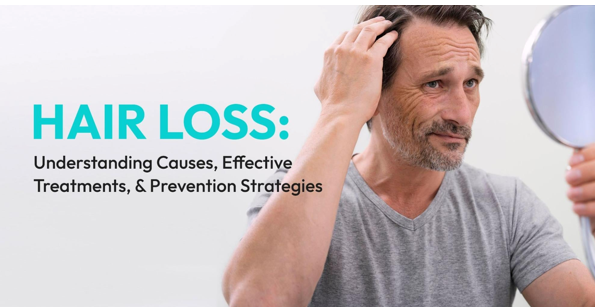
Hair loss can be a distressing condition that affects many people, particularly school-going children and teenagers, who often face social and emotional challenges related to it. The causes of hair loss can vary from hormonal imbalances to psychological stress. In addressing hair loss, it is crucial to understand the underlying causes and adopt an appropriate treatment strategy that not only aims to stop the hair fall but also focuses on overall well-being and prevention.
Identifying the Causes of Hair Loss
Before starting any treatment for hair loss, it is essential to first identify the cause. This is particularly important in cases where there is a significant and sudden loss of hair. One of the most common causes of hair fall is telogen effluvium, a condition where a large number of hair follicles prematurely enter the resting phase, leading to excessive shedding. However, to treat the condition effectively, it is important to rule out underlying causes such as:
- Viral infections or fever: A past history of fever or infection in the previous months could trigger hair loss.
- Psychological stress: Emotional stress, such as the loss of a loved one, a breakup, or other stressful life events, can contribute significantly to hair shedding. Depression and anxiety are linked to increased levels of stress hormones, which can disrupt the natural hair growth cycle.
- Diet and nutritional deficiencies: Inadequate intake of essential nutrients like vitamins and minerals can weaken hair follicles, causing hair to thin and fall out.
Precautions Before Treatment
In treating hair loss, it is crucial to start with preventive measures before moving to any medical treatments. It is always advisable to emphasize the importance of following strict hygiene and care routines. For example:
- Personal hygiene: Patients should change their combs and other hair accessories regularly to avoid any infections.
- Proper scalp care: It is essential to keep the scalp clean and free from dandruff or excess oil that might hinder hair growth.
- Avoiding heat treatments: Excessive use of heat on hair (e.g., straighteners, blow dryers) can exacerbate hair damage.
Medical and Natural Approaches to Treatment
The first step in treating hair loss caused by conditions like telogen effluvium is to control the hair fall rather than focus on regrowing hair. Immediate use of medicated products may be necessary for quick results. Medications can help stabilize hair shedding, and they typically include:
- Prescription medications: These are often used for a short period (e.g., one week) to stabilize the hair fall. Common treatments include tablets and topical solutions that address hormonal imbalances or scalp conditions.
- Nutritional supplements: Alongside medical treatments, it is essential to provide patients with a diet rich in vitamins, minerals, proteins, and antioxidants to aid in hair regeneration. Key nutrients that support hair health include biotin, iron, zinc, and omega-3 fatty acids.
Once the hair fall is under control, natural products like herbal oils, conditioners, and shampoos can be introduced to further support hair growth and strengthen the hair shaft. However, these should only be considered after the underlying causes have been addressed and the patient is on the path to recovery.
Addressing Psychological Factors
For individuals suffering from significant hair loss, especially due to stress or trauma, it is essential to address the emotional and psychological aspects of the condition. Treating hair loss requires a holistic approach that includes managing stress levels, reducing anxiety, and providing emotional support. Practicing relaxation techniques, encouraging positive thinking, and counselling can help patients regain their confidence and prevent further psychological stress from exacerbating the hair fall.
The Importance of a Comprehensive Approach
To effectively treat hair loss, it is not enough to focus solely on the hair itself. A comprehensive approach involves addressing the root causes, following strict hygiene practices, using medications when necessary, and incorporating nutritional support. By following a well-rounded treatment plan that considers both the physical and psychological aspects, individuals can experience a significant reduction in hair loss and promote healthier hair growth over time.
Hair loss, particularly in younger individuals, can be a complex issue influenced by various factors, including physical health, emotional stress, and lifestyle choices. To manage this condition effectively, it is crucial to first identify the cause, follow necessary precautions, and then begin treatment with a combination of medication, nutritional support, and stress management. With patience and a holistic approach, most patients can see improvements in both the reduction of hair fall and the regrowth of their hair.
Hair Growth and Maintenance Tips for Different Stages of Life
Maintaining healthy hair is a concern for people at all stages of life, whether it’s for children, adults, or elderly individuals. From dealing with hair loss to ensuring good hair health during pregnancy, understanding the causes and treatments for hair-related issues can be a crucial step in improving one’s hair condition. Here’s an informative guide on various aspects of hair care, based on different needs and concerns:
1. Hair Care for Children and Young Individuals:
When dealing with hair conditions in younger individuals, particularly school-going children, it’s important to take a holistic approach. It’s common to encounter problems like dandruff or excessive hair fall, which often require preventative measures along with treatment.
Before applying any treatment, it’s essential to explain and emphasize the precautions needed. For example, ensuring proper hygiene practices like regular comb cleaning and changing combs frequently can significantly reduce the chances of recurring problems. In many cases, following these basic steps can resolve up to 60-70% of the problem without needing additional treatments.
2. Addressing Hair Fall (Telogen Effluvium):
If hair loss begins suddenly and in large quantities, the cause needs to be identified first. One common cause is Telogen Effluvium, a condition where hair falls out due to stress, trauma, or health issues. Before addressing the hair loss itself, it’s important to understand its root cause:
- Medical Conditions: Viral fever, fever-related illnesses, or significant emotional stress (such as losing a loved one, experiencing depression, or emotional trauma like breakups) can trigger excessive hair shedding.
- Hormonal Factors: Imbalances in hormones, particularly during changes like pregnancy or menopause, can also contribute to hair loss.
In treating Telogen Effluvium, it’s important to focus on stopping the hair fall first. Often, medication is required for a period (around a week) to stabilize the situation. After the initial phase of treatment, natural hair regrowth solutions and nutritional support (such as protein, vitamins, and antioxidants) can be introduced.
3. Hair Care During Pregnancy:
During pregnancy, hair health can be influenced by various factors including hormonal changes, diet, and nutrient intake. While it’s not always possible to directly influence the baby’s hair during pregnancy, following some basic steps can improve the overall health of the mother’s hair:
- Balanced Diet: Pregnant women often tend to increase their carbohydrate intake, but it is important to balance it with an adequate amount of proteins, vitamins, and minerals. These nutrients not only support the mother’s overall health but also contribute to the proper growth of the baby’s hair.
- Folic Acid: Doctors often recommend taking folic acid before pregnancy and continuing it during pregnancy, as it helps ensure proper fetal development, including the growth of hair.
Additionally, hair health can also be impacted by the genetic factors inherited from both maternal and paternal relatives, though nutrition and overall care still play an essential role.
4. Hair Maintenance in Older Individuals (Post-Menopause):
As individuals age, particularly women who have reached menopause, hormone levels fluctuate and can lead to changes in hair texture and growth. It’s common for hair growth to slow down or for hair to become thinner.
For women in this stage of life, several factors need to be considered:
- Hormonal Changes: After menopause, there is a decrease in the production of female hormones like estrogen, which can negatively impact hair health. This hormonal imbalance can lead to thinning hair or hair loss.
- Circulation: Proper blood circulation in the scalp is essential for healthy hair. Regular scalp massages, either manually or using oils, can promote better circulation and ensure the nutrients in the blood reach the hair follicles.
For women who are near or have already reached menopause, maintaining a clear scalp and improving blood flow can be done with techniques like oil massages, or using specific oils like Shiro (an Ayurvedic oil blend). Applying oil and massaging it into the scalp helps stimulate hair follicles and improve circulation, promoting hair growth.
Additionally, the right diet is crucial in supporting hair growth. Including fruits, antioxidants, and good oils in the diet will nourish the hair from the inside out.
Conclusion:
Hair health can be influenced by several factors, from hormonal imbalances and stress to nutritional deficiencies. It is important to tailor hair care routines to the individual’s stage in life, whether it’s managing stress-related hair fall in younger individuals, addressing hormonal changes during pregnancy and menopause, or simply maintaining healthy hair through regular care and a balanced diet. Following the right precautions, using the correct treatments, and maintaining a healthy lifestyle can go a long way in promoting good hair health.
